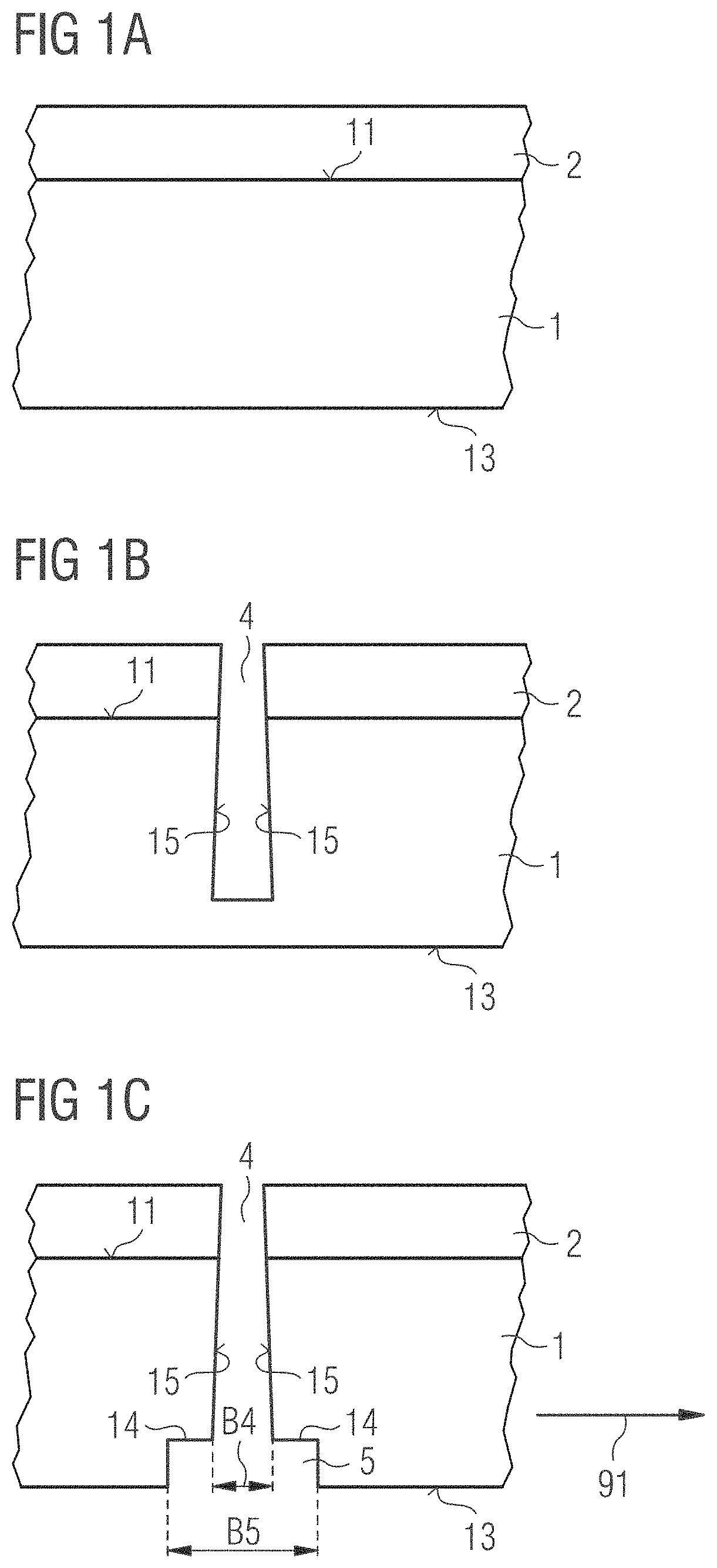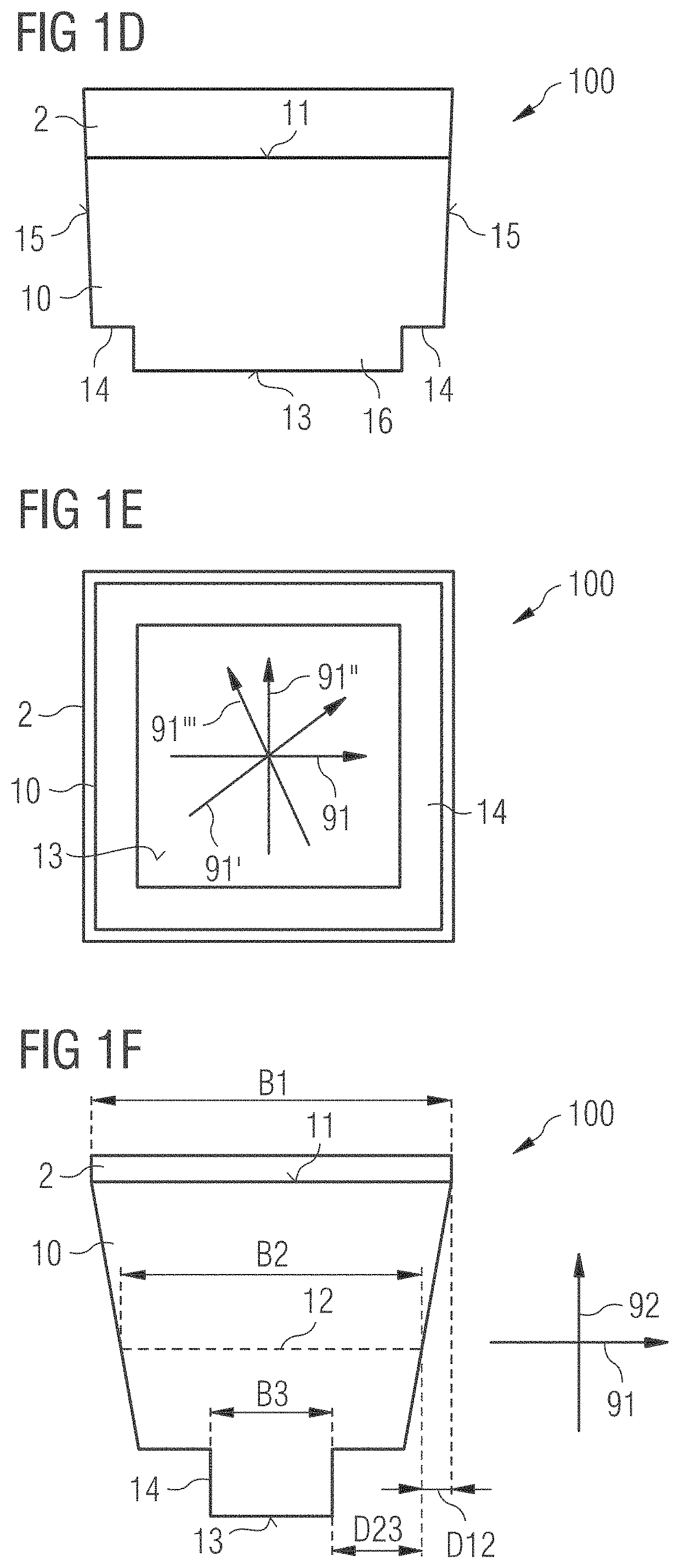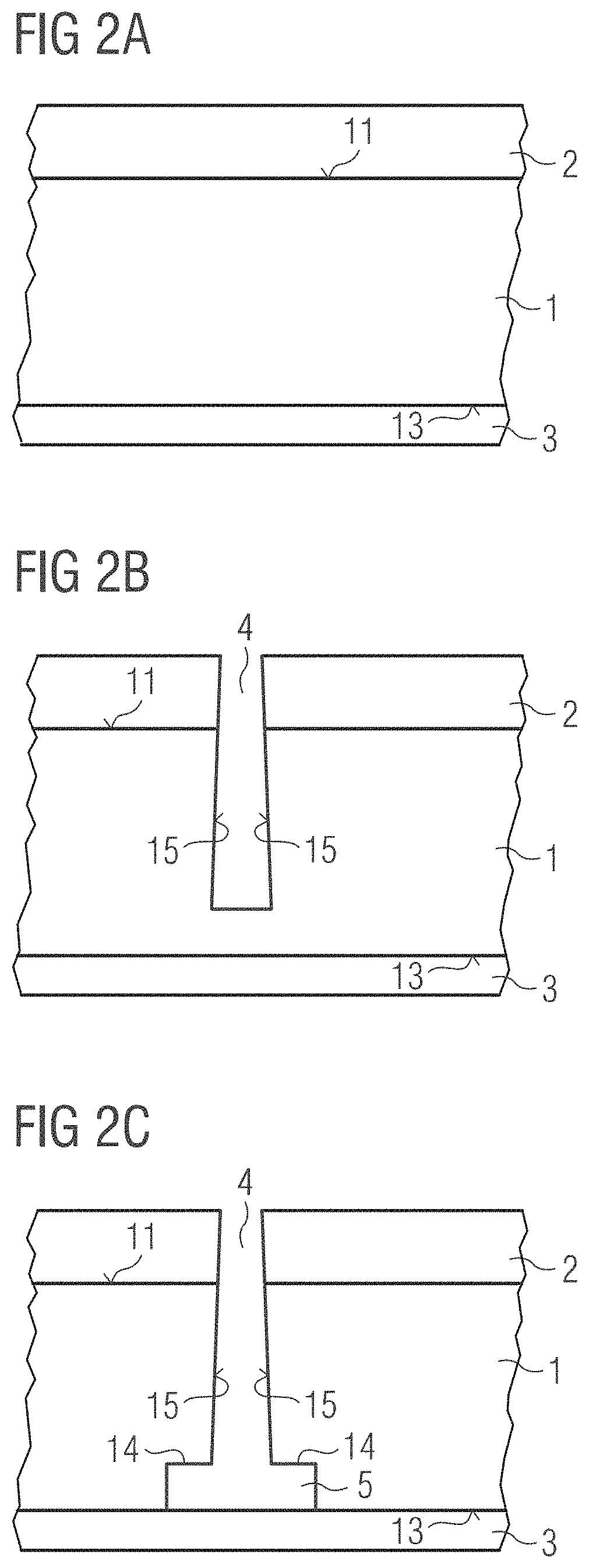Semiconductor chip, method of producing a semiconductor chip and apparatus having a plurality of semiconductor chips
a semiconductor chip and semiconductor technology, applied in the direction of semiconductor devices, semiconductor/solid-state device details, electrical devices, etc., can solve the problems of reducing the breakage stability of the chips, reducing and reducing the breakage strength of the chips. , to achieve the effect of improving the breakage strength of the semiconductor chips, and reducing the number of semiconductor chips
- Summary
- Abstract
- Description
- Claims
- Application Information
AI Technical Summary
Benefits of technology
Problems solved by technology
Method used
Image
Examples
Embodiment Construction
>[0036]In connection with FIGS. 1A to 1F, a method for producing a semiconductor chip 100 and features of the semiconductor chip 100 are described. For this purpose, in a first method step, as shown in FIG. 1A, a substrate wafer 1, shown in a partial view, is provided with a semiconductor layer 2 applied thereon in large-area fashion. In particular, the substrate wafer 1 has a top side 11 facing the semiconductor layer and a bottom side 13 facing away from the semiconductor layer 2. The semiconductor layer 2, which can also be embodied as a semiconductor layer sequence with a plurality of semiconductor layers according to the description in the general part, can be grown on the top side 11 of the substrate wafer. Alternatively, it may also be possible that the semiconductor layer 2 has been grown on a growth substrate wafer and afterwards has been transferred onto the substrate wafer 1 formed by a carrier substrate wafer. Accordingly, the substrate wafer 1 may be either a growth sub...
PUM
| Property | Measurement | Unit |
|---|---|---|
| thickness | aaaaa | aaaaa |
| thickness | aaaaa | aaaaa |
| width | aaaaa | aaaaa |
Abstract
Description
Claims
Application Information
 Login to View More
Login to View More - R&D
- Intellectual Property
- Life Sciences
- Materials
- Tech Scout
- Unparalleled Data Quality
- Higher Quality Content
- 60% Fewer Hallucinations
Browse by: Latest US Patents, China's latest patents, Technical Efficacy Thesaurus, Application Domain, Technology Topic, Popular Technical Reports.
© 2025 PatSnap. All rights reserved.Legal|Privacy policy|Modern Slavery Act Transparency Statement|Sitemap|About US| Contact US: help@patsnap.com



